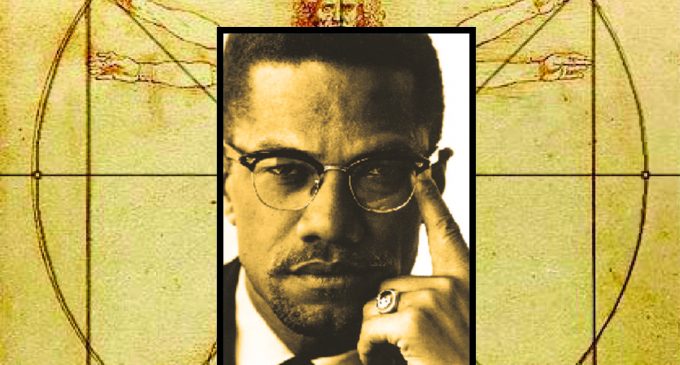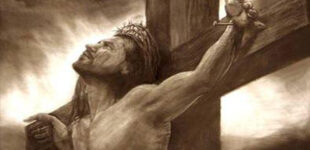View Malcolm X as The Vitruvian Man at what would be his 90th birthday

By Bill Turner
Guest Columnist
“El-Hajj Malik El-Shabazz was a Vitruvian Man,” replied Alex Haley, the author of the riveting “Autobiography of Malcolm X,” when I asked him 25 years ago to draw a circle around the life of this grand public figure whose beleaguered parents named him Malcolm Little.
When students are introduced to mathematics, often they start with a lesson on Leonardo da Vinci’s world-renowned drawing that illustrates the properties and relationships of points, lines, angles, curves, surfaces and solids. The life and times of Malcolm X – who would be 90 this week had he not been killed 50 years ago – should be required study for the understanding of what is America’s ongoing dilemma: the discrepancy between our valuing of equality on the one hand and the persistence of racial bigotry and inequality on the other.
The Vitruvian Man has been called the Canon of Proportions. “By any means necessary” was Mr. Malcolm’s standard and all-encompassing response whenever he was asked for the formula for blacks to achieve freedom and equality. Taken on its surface, that answer pointed to an oblique reign of terror in the minds of most Americans, because it was always blown out of proportion, taken out of context, and framed inside the image of Malcolm as a monster, as compared to Dr. Martin Luther King Jr. Malcolm kept an open mind in terms of any and all strategies that could be employed to achieve the desired ends. “Necessary” says that if violence is not necessary in pursuit of freedom, justice, and equality then, it would not be used. That pretty straightforward line got curved and convoluted.
Just as da Vinci’s figure depicts a nude male figure as two overlaid positions with arms and legs apart and at the same time inscribed in a circle and square, Malcolm X’s points of view stripped bare the two-faced image of America. With the precision of his peerless oratorical protractor and his level-headed logic, Malcolm X drew lines and circles around a binary set of laws: one for whites and another for blacks when it came to freedom of speech, of religious expression, of a free press, the right to peacefully assemble, to petition the government for redress of grievances, and especially the right of people to keep and bear arms.
The Constitutional circle – the Bill of Rights – did not square where people of color in America are concerned?
The life and times of Malcolm X, as told in the “Autobiography,” published in 1965, was described by Time magazine as “one of the most important books of the century.” Malcolm X, between his teen years and mid-20s, was – between Boston and Harlem – a self-described live-by-the-wits street hustler, a drug peddler an addict, a con artist, a thug, and a gun-toting burglar who was caught and convicted and served eight years in prison. That was Malcolm’s nature, his cosmos, and he was but a small-scale representation of millions of poor and uneducated young black men, much similar to those who fail in the classrooms and have regular run-ins with the law, still seeking the American Promise, like Freddie Grey, in modern-day Baltimore.
But, what is lesser known about Malcolm, the complex part, is how he worked his way through various changes and conversions: from a turbulent street life to a disciplined, self-taught reader who became entranced with ideas, to the human rights leader the world would come to know; who, just before his murder, renounced the racist hostility he voiced while he was the leading spokesman for the Nation of Islam. At the apex of his life, the arc of Malcolm’s embrace orbited all humans, stretching worldwide like a geometric ellipse; and, by changing so fundamentally, he circled his own square.
The Vitruvian Man and Malcolm X exist in the same space: both are expressions of the search for connections, with da Vinci exclaiming, “Man is the model of the world.”
Malcolm X was an exemplary model of reinvention and it is good that he is now embraced and hopefully understood by a generation that has many of the same and some even greater and more complex challenges than existed during his lifetime.
Malcolm X symbolized the very heart and soul of the black experience; what went around in his day has come around again and the circle is unbroken.
Like Alex Haley said, El-Hajj Malik El-Shabazz, Malcolm X, was a Vitruvian Man, a symbol of the ages.
Dr. Bill Turner is a noted educator, writer and thinker who called Winston-Salem home for many years. Reach him at bill-turner@comcast.net.
William H. Turner © 5/16/2015











